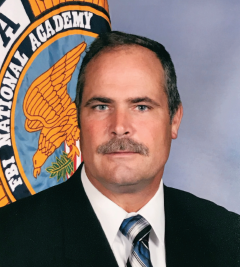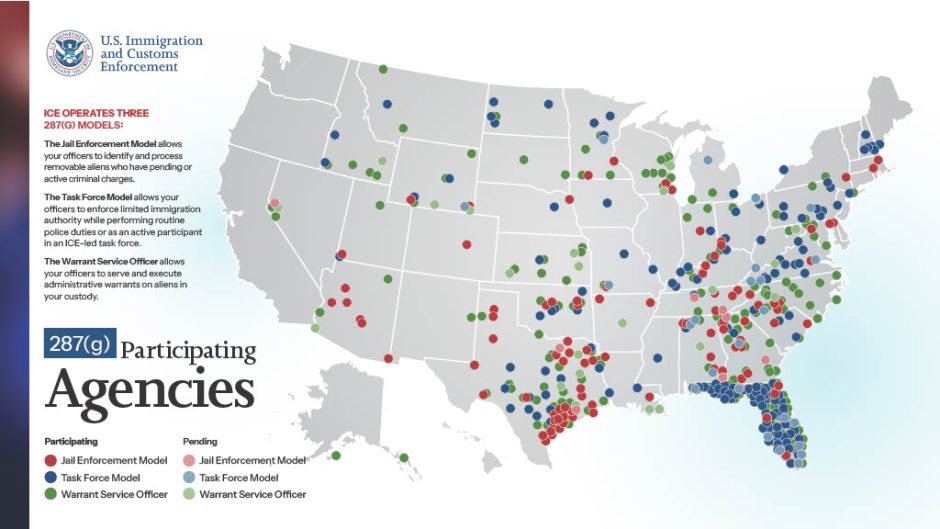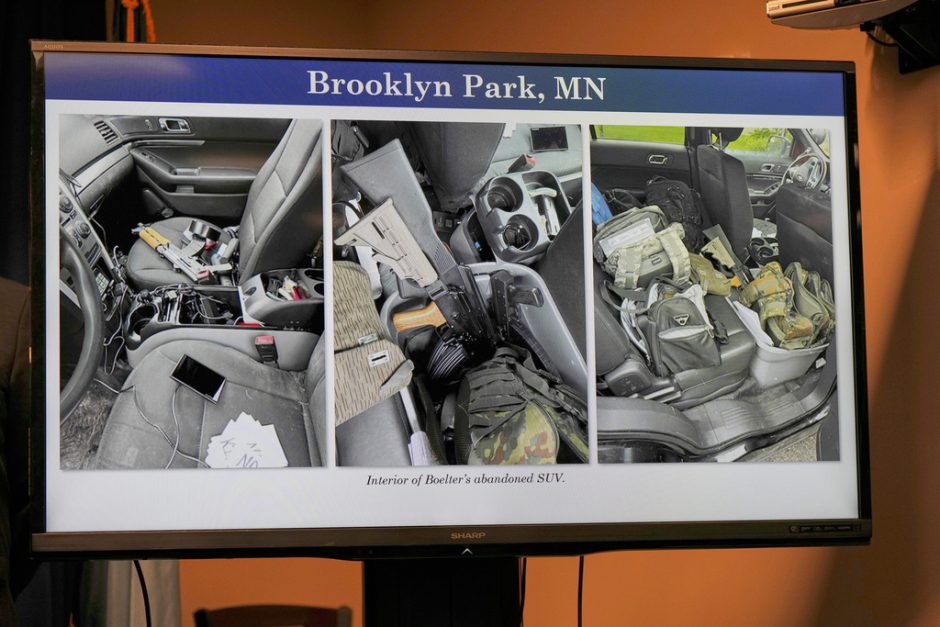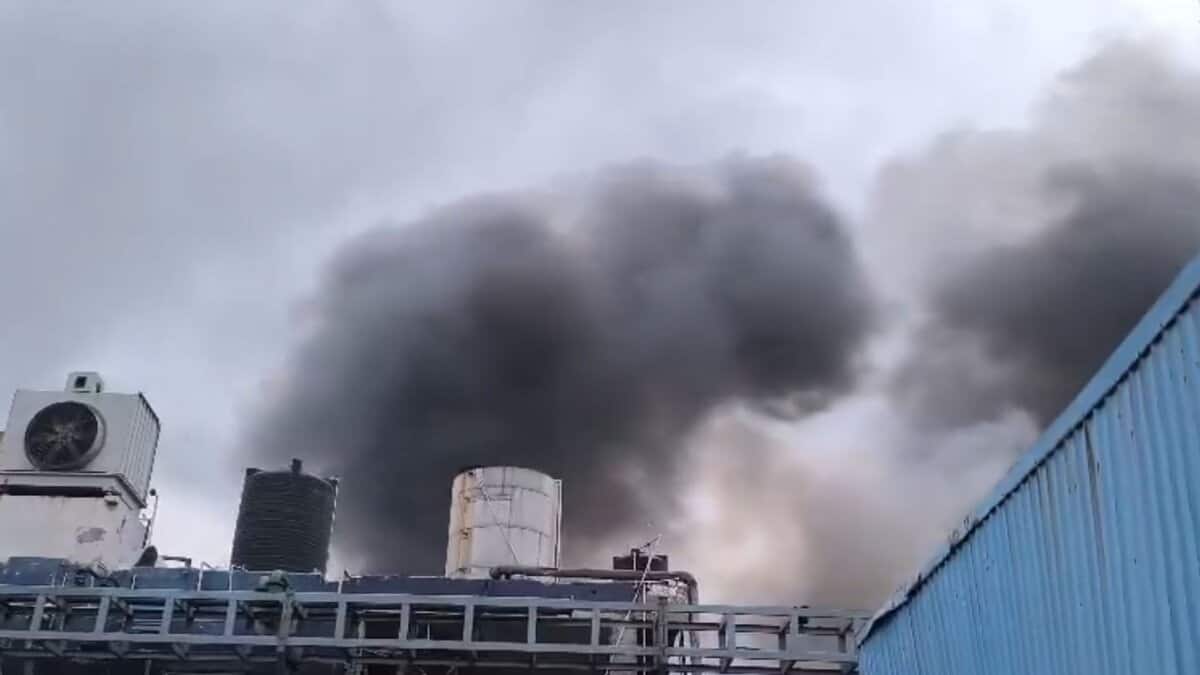

WASHINGTON – After President Donald Trump threatened “sanctuary” cities and towns with a cutoff of federal funding – among other things – seven rural Minnesota counties signed agreements with Immigration and Customs Enforcement to help implement federal immigration law.
Cass, Crow Wing, Itasca, Freeborn, Jackson, Kandiyohi and Mille Lacs county sheriffs have signed memorandums of understanding (MOU) with ICE to cooperate one way or another with that agency in its efforts to round up and deport undocumented aliens.
Trump won all of those counties in a landslide in last November’s election, although the president failed to win the state.
Most of the agreements were entered into in February and March, although the Kandiyohi County sheriff’s department signed its agreement with ICE in May and the Mille Lacs County sheriff’s department signed its MOU just last week.
Although all the sheriff’s departments have agreed to cooperate with ICE, none of them are ready to implement their plans, which include 40 hours of training for the officers who would enforce federal immigration law. And the degree of cooperation that has been agreed to varies from county to county.
The Crow Wing County sheriff’s department, for instance, has agreed to help ICE round up undocumented immigrants it comes in contact with in the course of its police work. “But we’re not going on raids or anything like that,” said Crow Wing County Sheriff Eric Klang.
He also said the crimes that would prompt cooperation with ICE “would have to be serious.”
“We’re not talking about shoplifting,” Klang said.
Klang also agreed to serve civil detainers for ICE, meaning it would serve warrants on undocumented aliens who would be picked up for deportation proceedings by ICE.
Under federal law, local and state police are not required to enforce federal immigration law.
And there are plenty of legal opinions, including one issued this year by Minnesota Attorney General Keith Ellison, that have determined that local law enforcement does not have to comply with an ICE detainer request – unless it is accompanied by a court order.
And the American Civil Liberties Union (ACLU), which has forcefully opposed the program, says it has led to civil rights violations and deportations of people who have been detained for lesser violations, like a broken tail light.
State laws in California, Illinois, Washington state, Connecticut, Oregon and New Jersey prohibit such cooperation – but Minnesota has no such law.
Klang is also seeking to sign an agreement with the U.S. Marshals Service, offering up empty space in the county jail to hold immigrants detained by ICE.

He said the 287-bed jail has only been holding 70 to 80 individuals, and there’s plenty of room for ICE to use.
But Klang said he needed permission from the county board and said he has been going back and forth between the U.S. Marshals Service and the board about his proposal.
“It would basically require very little of us,” Klang said. “And it would bring us more than $100 a day per inmate. It would be a money maker for the county and the state.”
‘Not a great idea’
The partnership between ICE and local law enforcement was established in 1996 by Congress when the program was included as section 287(g) of the Immigration and Naturalization Act of 1996.
In the past, few counties signed up for the 287(g) program, which allowed the Department of Homeland Security to delegate specified, expanded immigration enforcement powers to local deputized police officers.
But hundreds of law enforcement agencies across the country, including the seven in Minnesota, agreed to join the 287(g) program after Trump won his second term in office and expanded the program’s reach.
“The 287(g) program allows ICE — through the delegation of specified immigration officer duties — to enhance collaboration with state and local law enforcement partners to protect the homeland through the arrest and removal of aliens who undermine the safety of our nation’s communities and the integrity of U.S. immigration laws,” ICE says on a website that tracks the agreements.
Last month, the Department of Homeland Security posted a list of jurisdictions it called “sanctuaries” because they were deemed to have “immigrant friendly” policies that hindered Trump’s massive deportation efforts.
The list, which included the Twin Cities and 20 Minnesota counties (but not those that have applied to join the 287(g) program) was aimed at identifying jurisdictions that would be under threat of losing federal funding.
But the list was replete with errors and taken down from the DHS website after being posted for less than 24 hours.
Unlike his counterpart in Crow Wing County, Mille Lacs County Sheriff Kyle Burton said he has agreed to a very limited partnership with ICE.
He said he will allow ICE to deputize a small percentage of his 80-member force, which included personnel at the county jail and dispatchers, as well as law enforcement officers.
Burton said there are few immigrants — both legal residents and undocumented — in Mille Lacs County. But he’s concerned about the fentanyl and methamphetamine that has poured into the county from Mexico and wants to be able to use every tool at his disposal to combat that scourge.
“We rarely see anybody cooking meth here,” he said. “It’s all coming across the border.”
Trump’s hardline campaign against immigration also seems to have resonated in the very “red” rural county. “A lot of my constituents have expressed concern about this, even before the election,” he said.
Freeborn County Sheriff Ryan Shea said he wants ICE to deputize nine or so of the 40 employees at the county jail – which is already an ICE detention center – to be able to serve detainers.
And Itasca County Sheriff Joe Dasovich said he was motivated to join the 287(g) program after two undocumented immigrants, posing as plainclothes police, went door-to-door threatening elderly residents and strong-armed them into giving over a total of about $40,000.
When implemented, a yet undetermined number of Itasca County law enforcement officers will be able to enforce limited federal immigration laws during their routine police duties.
Like other sheriffs, Dasovich said he considered partnering with DHS a boon to his department’s efforts to enforce the law and increase its crime-fighting “arsenal.”
Meanwhile, Jackson County has signed two agreements. One would allow it to serve detainers and the other would allow its deputized officers to interrogate people in its custody about their immigration status and send those who are undocumented to ICE for deportation proceedings.
Julio Zelaya, policy and advocacy director at the ACLU of Minnesota, said “it’s a cautionary situation to be working with ICE.”
“They put themselves in the crosshairs of community mistrust,” said Zelaya of the counties that have signed 287(g) agreements. “It’s just not a great idea.”
The post Minnesota sheriff’s departments seek to cooperate with ICE appeared first on MinnPost.













































